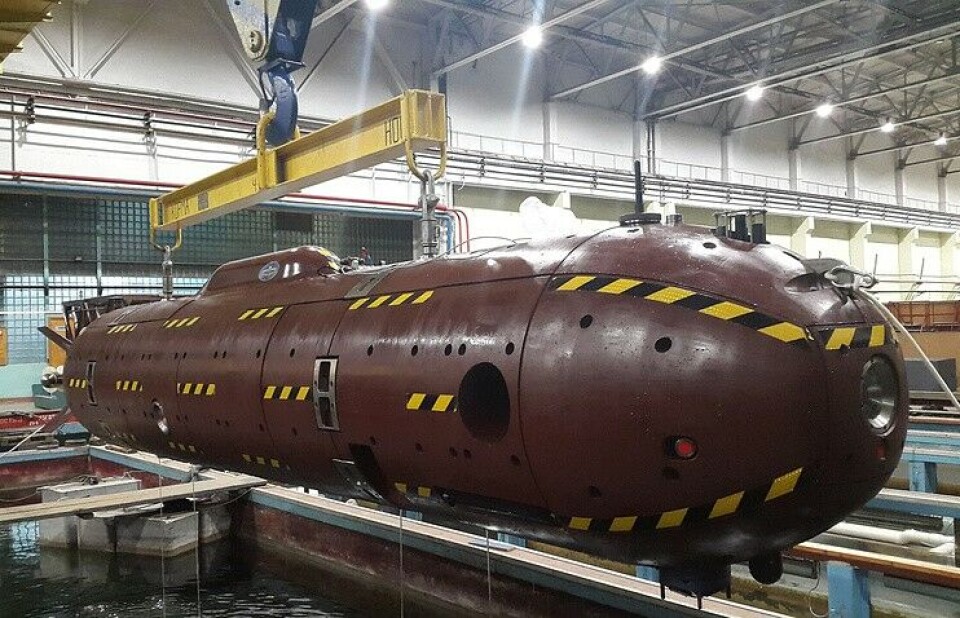
This is Russia’s new unique underwater drone for Arctic waters
A series of unmanned underwater vehicles (UAV) for both research and military purposes are under development.
The existence of the new drone, code-named Klavesin-2R-PM, became public as Rubin Central Design Bureau of Marine Technology recently published its annual report 2015.
Also other drones are listed in the report:
- Completed construction of “Yunona” autonomous underwater vehicle (AUV), designed for search/survey work at 1,000m; being prepared for state testing
- Began initial testing of prototype “Klavesin-2R-PM” AUV at Krylov State Science Centre in fourth quarter of 2015; designed for search/Survey work at 6,000m
- Began initial testing of “Vityaz” device, designed for scientific research work at depths up to 11,000m
- Completed work related to creation of remote-controlled undersea geological survey drilling system; designed for Arctic operations at 4,500m
Rubin, a subsidiary of the United Shipbuilding Corporation, is one of Russia’s three design bureaus for military submarines and has well-known ballistic missile carriers like Yankee-, Delta- and Typhoon in its records.
Two units of Klavesin-2R-PM are to be built in St. Petersburg, TASS reported in June. Speaking with the news agency, Rubin Director Igor Villeneuve says the new drone has “increased autonomy and depth in addition to surveillance and search functions.”
Klavesin-2R-PM can dive to 6,000 metres and is intended for research.
According to information posted at a Livejournal blog site discussing Russian military news, the new underwater drone is 6,5 m long, 1 metre diameter, has a weight f 3,7 tons and a maximum cruising range of 50 km from its mother vessel. In contradiction to other sources, the blog post claims the maximum diving depth is about 2,000 m.
Sea depth under the North Pole is 4,261 m. while the average sea depth of the Barents Sea is 230 m.
The predecessor of the new drone has been diving to the Arctic seabed on several locations helping researchers gather evidence that the Lomonosov Ridge across the North Pole is a continuation of the Russian shelf.
In addition to geological research, underwater drones are used for military intelligence, although information about such sailings in Arctic waters is rare to find in open sources.
It is, however, no secret that the Russian Navy has big plans for developing unmanned submarines.
Interviewed by the military newspaper Krasnaya Zvezda (Red Star) last year, Chief Designer Igor Vilnitom with the Rubin Design Bureau confirmed the strategy:
… “an important difference between the new generation will be extensive use of unmanned underwater vehicles,” Vilnitom said talking about the future generations military submarines.
















